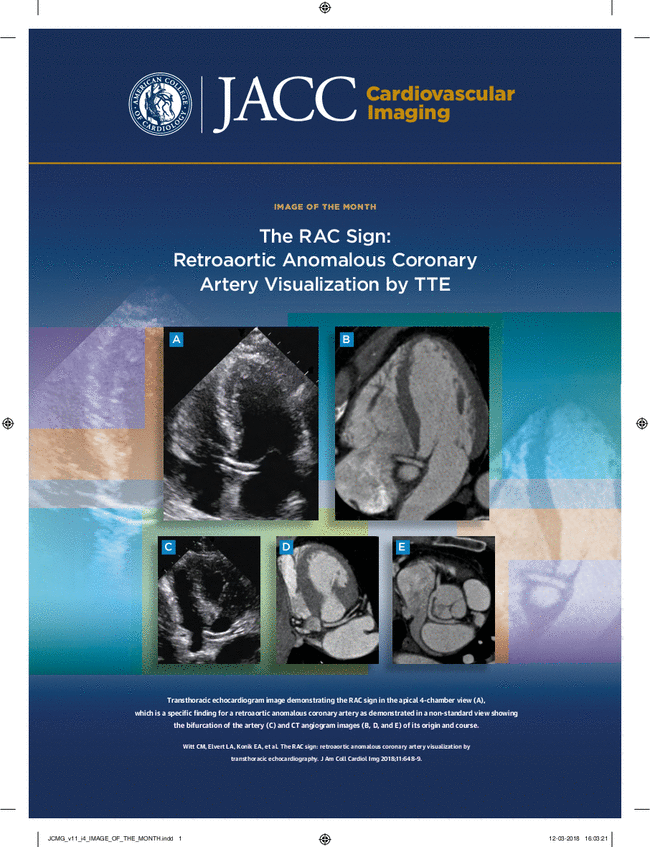Association Between Physiological Significance and Vulnerable Plaque Characteristics in Patients With Myocardial Infarction
IF 12.8
1区 医学
Q1 CARDIAC & CARDIOVASCULAR SYSTEMS
引用次数: 0
Abstract
Background
Hemodynamically obstructive coronary plaques may contain more vulnerable plaque characteristics than nonobstructive lesions.
Objectives
The authors aimed to assess whether pressure-wire–based physiologic indices in nonculprit lesions are associated with vulnerable plaque characteristics.
Methods
In the PROSPECT II study, patients with recent myocardial infarction underwent coronary angiography and culprit lesion percutaneous coronary intervention plus combined near-infrared spectroscopy and intravascular ultrasound assessment of all 3 coronary arteries. Instantaneous wave-free ratio (iFR) or fractional flow reserve (FFR) measurements were performed in intermediate lesions with angiographic stenosis >40%.
Results
Among 898 patients, 319 angiographically intermediate lesions in 275 patients had matched intravascular ultrasound/near-infrared spectroscopy and FFR/iFR measurements; 96 (30.1%) lesions were physiologically significant (FFR ≤0.80 or iFR ≤0.89) and 223 (69.9%) were not. Physiologically significant lesions, compared with those that were not, more likely had a minimal lumen area ≤4.0 mm2 (96.9% vs 83.9%), plaque burden ≥70% (92.7% vs 71.3%) and maximum lipid core burden index in any 4 mm segment of the lesion ≥324.7 (57.0% vs 45.4%). By multivariable analysis, lesion location in the left anterior descending artery, small minimal lumen area, and larger plaque burden were independently associated with physiologic significance, whereas maximum lipid core burden index in any 4 mm segment of the lesion was not.
Conclusions
In patients with recent myocardial infarction, angiographically intermediate but physiologically significant coronary lesions were more likely to have high-risk vulnerable plaque features compared with nonphysiologically significant stenoses. However, coronary lesions without physiological significance also had a moderate-to-high prevalence of high-risk plaque characteristics, which may explain the residual risk associated with conservative noninterventional management of these lesions. (Providing Regional Observations to Study Predictors of Events in the Coronary Tree II [PROSPECT II]; NCT02171065)
心肌梗死患者的生理意义与易损斑块特征之间的关系:一项前瞻性II亚研究。
背景:血流动力学阻塞性冠状动脉斑块可能比非阻塞性斑块具有更多易损斑块特征。目的:作者旨在评估非罪魁祸首病变中基于压力丝的生理指标是否与易损斑块特征相关。方法:在PROSPECT II研究中,近期心肌梗死患者行冠状动脉造影和罪魁祸首病变经皮冠状动脉介入治疗,并联合近红外光谱和血管内超声对所有3条冠状动脉进行评估。瞬时无波比(iFR)或分数血流储备(FFR)测量在血管造影狭窄bb0 40%的中间病变。结果:在898例患者中,275例患者中319例血管造影中度病变的血管内超声/近红外光谱和FFR/iFR测量结果相匹配;96例(30.1%)病变生理显著(FFR≤0.80或iFR≤0.89),223例(69.9%)病变无生理显著性。与生理上不显著的病变相比,最小管腔面积≤4.0 mm2 (96.9% vs 83.9%),斑块负担≥70% (92.7% vs 71.3%),病变任何4 mm段的最大脂质核心负担指数≥324.7 (57.0% vs 45.4%)的可能性更大。通过多变量分析,病变位于左前降支、最小管腔面积小、斑块负荷较大与生理意义独立相关,而病变任意4mm段的最大脂质核心负荷指数则无相关性。结论:在新近发生心肌梗死的患者中,与非生理性显著的狭窄相比,血管造影表现为中度但生理上显著的冠状动脉病变更有可能具有高危易损斑块特征。然而,无生理意义的冠状动脉病变也具有中等至高度的高危斑块特征,这可能解释了对这些病变进行保守非介入治疗的剩余风险。(为研究冠状树事件的预测因子提供区域观察[PROSPECT II];NCT02171065)。
本文章由计算机程序翻译,如有差异,请以英文原文为准。
求助全文
约1分钟内获得全文
求助全文
来源期刊

JACC. Cardiovascular imaging
CARDIAC & CARDIOVASCULAR SYSTEMS-RADIOLOGY, NUCLEAR MEDICINE & MEDICAL IMAGING
CiteScore
24.90
自引率
5.70%
发文量
330
审稿时长
4-8 weeks
期刊介绍:
JACC: Cardiovascular Imaging, part of the prestigious Journal of the American College of Cardiology (JACC) family, offers readers a comprehensive perspective on all aspects of cardiovascular imaging. This specialist journal covers original clinical research on both non-invasive and invasive imaging techniques, including echocardiography, CT, CMR, nuclear, optical imaging, and cine-angiography.
JACC. Cardiovascular imaging highlights advances in basic science and molecular imaging that are expected to significantly impact clinical practice in the next decade. This influence encompasses improvements in diagnostic performance, enhanced understanding of the pathogenetic basis of diseases, and advancements in therapy.
In addition to cutting-edge research,the content of JACC: Cardiovascular Imaging emphasizes practical aspects for the practicing cardiologist, including advocacy and practice management.The journal also features state-of-the-art reviews, ensuring a well-rounded and insightful resource for professionals in the field of cardiovascular imaging.
 求助内容:
求助内容: 应助结果提醒方式:
应助结果提醒方式:


